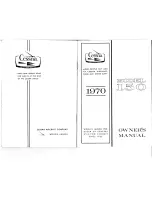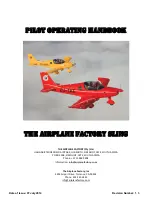
Vers.1.0
S. 16 / 30
ROLLING’s spin behaviour is easily manageable: It takes a lot of brake travel
to induce the spin, and then the pilot has quite some time to react and release
both brakes.
Fullstall
If you pull both brakes too far, the wing will perform a so called full stall. The
wing suddenly stops its forward motion, but the pilot is still moving forward.
So from the pilots view, the glider will tilt backwards. It is very important to
not release the brakes in this moment. Otherwise the glider might surge forward
below the pilot.
The Full Stall is a complex manoeuvre and the perfect execution can not be
explained in this manual. If you want to learn a proper full stall, it makes sense
to do this under professional guidance.
The available brake travel before stalling the wing depends on the size. It is
approximately 55cm for the ROLLING 22 and 60 cm for the ROLLING 24.
Those numbers are just a rough indication. (The publication of the brake travel
is claimed by the EN 926.)
It would be dangerous to use the brake travel according to those numbers,
because it is not practicable to measure the brake travel during flight, and in
turbulences the stall might occur with less brake travel. If you want to use the
whole brake travel of your glider safely, it is necessary do many intended spins
and full stalls to get a feeling for the stall behaviour.
Deep/Parachutal stall
The Deep Stall, or Parachutal Stall is kind of the pre stage to a Full Stall. The
wing has no forward motion and a high sink speed, but it is almost fully
inflated. The pilot can enter the Deep Stall by applying both brakes. It is very
difficult to keep the wing in a Deep Stall: If you pull the brakes a little too
much, the glider will enter a Full Stall. If you release the brakes too much, the
glider will go back to normal flight. To practice a Deep Stall, it is necessary to
master the Full Stall first.
A very old or worn out glider with a porous cloth or with a changed trim (due
to many winch launches, or deep spirals) might stay in a deep stall even after
releasing both brakes. Do not apply the brakes in such a situation, because the
wing would then enter a full stall ! You can exit the deep stall by pushing the
Содержание ROLLING
Страница 1: ...Vers 1 0 09 2010...
Страница 25: ...Vers 1 0 S 25 30 Line plans...















































